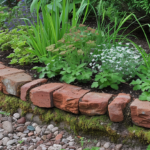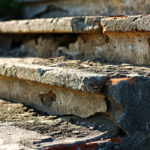In this article, we will explore the step-by-step process of installing a drip irrigation system. Drip irrigation is an efficient and effective way to water plants, conserving water and promoting healthy growth. By following this comprehensive guide, you will learn how to plan, gather materials, prepare the area, and install the mainline, emitters, and drip lines. Additionally, we will cover the setup of a timer and backflow preventer, as well as testing and adjusting the system for optimal performance.
Planning and Design
The success of implementing an efficient and cost-effective drip irrigation system hinges on carefully planning and designing the layout of the irrigation lines and emitters. Design considerations play a crucial role in determining the effectiveness of the system. One of the key design considerations is water pressure. It is important to ensure that the water pressure is sufficient to deliver water uniformly to all the emitters. Insufficient pressure can lead to inconsistent water distribution and poor plant growth. On the other hand, excessive pressure can cause damage to the emitters and result in water wastage. Therefore, it is essential to select the appropriate pressure regulators and pressure-compensating emitters to maintain consistent water flow. Additionally, designing the layout of the irrigation lines to minimize pressure loss and ensure even distribution is crucial for the overall efficiency of the system.
Gathering Materials and Tools
Before beginning the installation process, it is crucial to gather all the necessary materials and tools. The essential equipment needed for installing a drip irrigation system includes pipes, connectors, emitters, and a pressure regulator. It is important to choose the right materials that are durable and compatible with your specific irrigation needs. Additionally, proper tool usage, such as pipe cutters and wrenches, ensures a smooth and efficient installation process.
Essential Equipment Needed
To successfully install a drip irrigation system, one must gather essential equipment such as hoses, emitters, and connectors. Equipment selection plays a crucial role in the installation process. When choosing hoses, it is important to consider their durability and flexibility. High-quality hoses with UV protection are recommended to withstand the elements and ensure long-term functionality. Emitters are another key component of a drip irrigation system. Different types of emitters, such as drippers or micro-sprayers, allow for precise water distribution based on the specific needs of plants. Connectors are essential for joining hoses and emitters together, creating a seamless flow of water throughout the system. It is important to select connectors that are compatible with the chosen hoses and emitters to avoid leaks and ensure efficient water delivery. Overall, proper equipment selection is vital for a successful drip irrigation system installation.
Choosing the Right Materials
When choosing materials for a drip irrigation system, it is essential to consider factors such as durability and compatibility, ensuring efficient water delivery. Selecting components that are specifically designed for drip irrigation systems can help ensure the system’s longevity and effectiveness. Drip irrigation systems rely on various materials to function properly, including tubing, emitters, filters, and connectors. The tubing should be durable enough to withstand weather conditions and constant water flow, while the emitters should deliver water evenly and consistently. Filters are crucial for maintaining the system’s efficiency by preventing clogs and debris from entering the tubing. Additionally, choosing connectors that are compatible with the tubing and other components is essential for a secure and leak-free system. Regular maintenance of the system, including checking for leaks and cleaning the filters, is also necessary to ensure optimal performance and longevity.
Proper Tool Usage
While gathering the necessary materials and tools for installing a drip irrigation system, it is imperative to understand and practice proper tool usage to ensure the system’s successful installation. Tool maintenance plays a crucial role in ensuring the longevity and effectiveness of the tools. Regular cleaning, lubrication, and storage in a dry place can prevent rust and damage. Additionally, troubleshooting common issues that may arise during the installation process is essential. These issues may include leaks, clogged emitters, or low water pressure. Utilizing the correct tools, such as pipe cutters, hole punches, and emitters, can help address these problems efficiently. Understanding how to use these tools properly, along with regular maintenance, will contribute to the smooth installation and optimal functioning of the drip irrigation system.
Preparing the Area
Before installing a drip irrigation system, it is essential to prepare the area properly. This involves clearing existing vegetation to create a clean and open space for the system. Additionally, measuring and marking the area accurately will ensure precise installation. Lastly, removing any obstacles or debris will prevent any interference with the functioning of the system.
Clearing Existing Vegetation
In order to properly prepare the area for installing a drip irrigation system, it is essential to clear existing vegetation by using appropriate tools and techniques. Clearing techniques vary depending on the type and density of the vegetation. For smaller areas with light vegetation, hand tools such as rakes, shovels, and pruning shears can be used. However, for larger areas or areas with dense vegetation, alternative methods may be necessary. These can include using a brush cutter or a string trimmer to cut down larger plants or using herbicides to kill the vegetation. It is important to consider the environmental impact of the chosen method and to follow all safety guidelines. Once the area is cleared, it can be properly prepared for the installation of a drip irrigation system.
Measuring and Marking
During the process of installing a drip irrigation system, accurate measuring and careful marking of the area are crucial to ensure proper placement of the irrigation lines and components. Measuring techniques play a vital role in determining the dimensions and layout of the system. One common technique is using a measuring tape to measure the distance between various points, such as the water source and the plants that need irrigation. Additionally, marking tools, such as stakes, flags, or spray paint, are essential for marking the precise locations where the irrigation lines and components will be installed. These markings guide the installation process and ensure that the lines are correctly positioned to deliver water efficiently to the plants. By employing accurate measuring techniques and utilizing appropriate marking tools, the installation of a drip irrigation system can be executed with precision and efficiency.
Removing Obstacles or Debris
The removal of obstacles or debris is crucial for creating a clear and unobstructed area that is ready for the installation of the drip irrigation system. Obstacle removal and debris management are essential steps in ensuring the proper functioning and efficiency of the system. Before starting the installation process, it is important to survey the area and identify any potential obstacles that may interfere with the installation. This can include large rocks, tree roots, or any other objects that may obstruct the path of the irrigation pipes. Additionally, debris such as leaves, twigs, or other organic matter should be cleared away to prevent clogging and blockages in the system. Proper obstacle removal and debris management will help to maximize the effectiveness of the drip irrigation system and ensure the longevity of its components.
Installing the Mainline
Once the necessary materials are gathered, it is crucial to carefully plan the layout before installing the mainline for the drip irrigation system. This step ensures efficient water distribution and prevents potential issues in the future. When installing the mainline, it is important to first measure and mark the desired path. Then, using connectors, attach the mainline to the water source, ensuring a secure connection. It is recommended to use a pressure regulator to control the water flow and prevent damage to the system. Additionally, it is essential to check for any leaks or potential troubleshooting issues during the installation process. By carefully installing the mainline and addressing any issues promptly, the drip irrigation system will function effectively and provide optimal water distribution to the plants.
Adding Emitters and Drip Lines
To enhance water efficiency and ensure targeted irrigation, incorporate emitters and drip lines into the system design. Emitter placement plays a crucial role in the success of a drip irrigation system. Emitters are small devices that release water directly to the plant’s root zone, reducing water waste and evaporation. When placing emitters, it is important to consider the water needs and root spread of each plant. For example, plants with shallow roots may require multiple emitters placed closer to the plant, while plants with deep roots may need emitters placed farther apart. Additionally, water pressure is another important factor to consider when designing a drip irrigation system. Proper water pressure ensures that the emitters deliver water at a consistent rate. It is important to install a pressure regulator to maintain the recommended pressure range for optimal water distribution. By considering emitter placement and water pressure, a drip irrigation system can efficiently deliver water to plants, promoting healthy growth and conserving water resources.
Setting Up a Timer and Backflow Preventer
Regularly inspecting and maintaining the timer and backflow preventer is essential for ensuring the efficient operation and protection of the drip irrigation system. The timer programming allows for precise control over the watering schedule, ensuring that plants receive the right amount of water at the right time. It is important to regularly check the timer settings to make sure they are accurate and adjust them as needed. Troubleshooting the backflow preventer is crucial to prevent any contamination of the water supply. Regularly inspecting the backflow preventer for leaks or damage is important, as well as cleaning or replacing any worn-out parts. It is also necessary to test the backflow preventer periodically to ensure it is functioning properly and providing adequate protection for the irrigation system. By regularly inspecting and maintaining the timer and backflow preventer, the drip irrigation system can operate efficiently and effectively.
Testing and Adjusting the System
In order to optimize the performance of the drip irrigation system, conducting thorough testing and careful adjustment of its components, such as the water pressure regulator, is imperative. Testing methods play a crucial role in ensuring that the system is functioning at its best. One common testing method is the sprinkler can test, where water is collected for a specific period of time to measure the system’s output. Another method is the catch cup test, where cups are placed throughout the irrigation zone to measure water distribution. Adjusting water pressure is another important step in system optimization. This can be done by using a pressure gauge and adjusting the pressure regulator accordingly. By regularly testing and adjusting the system, users can ensure that their drip irrigation system is working efficiently and effectively.




